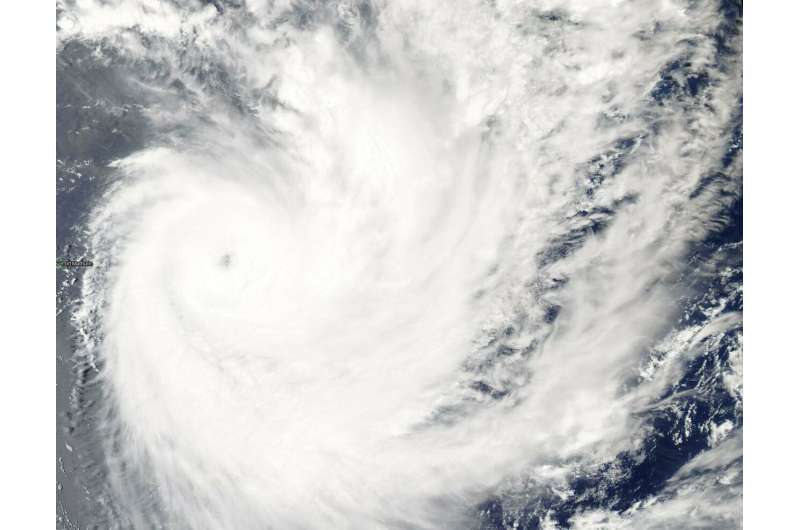NASA finds a pinhole eye in Tropical Cyclone Funani

Visible-light imagery from NASA's Aqua satellite revealed the development of a small eye in Tropical Cyclone Funani as the storm rapidly intensified into a major hurricane in the Southern Indian Ocean.
On Feb. 7, 2019, the Moderate Resolution Imaging Spectroradiometer, or MODIS, instrument aboard NASA's Aqua satellite captured a visible image of Tropical Cyclone Funani. The visible image revealed a pinhole eye surrounded by a thick ring of powerful thunderstorms.
At 10 a.m. EDT (1500 UTC) on Feb. 7, Funani was located near 19.9 degrees south latitude and 66.7 east longitude, approximately 530 nautical miles east of Port Louis, Mauritius. Funani was moving to south-southeast. Maximum sustained winds were near 115 knots (132 mph/213 kph). Funani is now a Category 4 hurricane on the Saffir-Simpson Hurricane Wind Scale.
Forecasters at the Joint Typhoon Warning Center expect Funani to strengthen slightly more and then begin a weakening trend on its trek to the south-southeast.
Provided by NASA's Goddard Space Flight Center





















